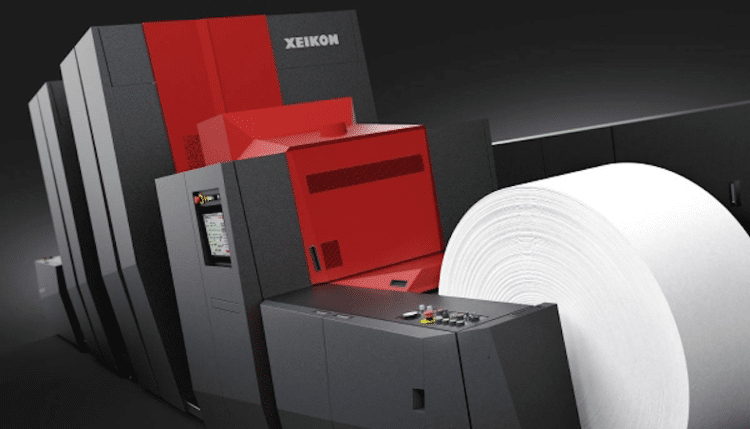“Changing market dynamics, but mainly ongoing technical issues in developing the liquid toner technology, including press uptime issues, encouraged us to take this difficult decision,” he added. “Our core vision remains supporting high volume, high quality, high value business for our customers in the graphic arts market and security printing.”
Xeikon terminates Trillium liquid toner project

Xeikon has canned its Trillium liquid toner programme, which it first revealed more than five years ago.
The Flint Group-owned manufacturer said the technology had "encountered several challenges" in bringing it to market as a commercial product since it was first shown in prototype as the Quantum single-colour unit in 2012.
Benoit Chatelard, president and CEO digital solutions, of Xeikon parent Flint Group, explained: “We are confident that the segments we operate can be well served with our current dry toner technology and the newly launched Panther UV inkjet technology."
"With our dry toner technology, we will continue our focus on both the packaging and document businesses, as well as specialty segments where we bring significant value including security printing and wall décor.”
Chatelard pointed out that Xeikon has positioned itself as a technology-agnostic provider, advising customers as to the most appropriate technology for their needs.
Topics
Interested in joining our community?
Enquire today about joining your local FESPA Association or FESPA Direct
Recent news

The importance of ink for large format printers
Ink is crucial for large format inkjet printers, influencing substrate compatibility, productivity, and cost. Nessan Cleary discusses the three main types which include UV-curable ink, latex ink and eco-solvent ink. Each ink type has specific strengths and weaknesses, making printers choice dependent on budget and intended applications.

What are the benefits of Direct-To-Fabric printing?
Direct-to-fabric printing is gaining popularity for high-volume textile production, enabling on-demand, customized short runs. These printers offer ink flexibility, accommodating various fabric types like cotton and silk, though ink development focuses on faster turnaround by reducing pre- and post-processing. Compared to traditional methods, direct-to-fabric inkjet printing is a more sustainable option due to reduced water and chemical usage, and localized production.

What are the opportunities for large format providers regarding digital touch screens?
Digital touchscreens are becoming increasingly common, offering businesses opportunities to improve customer engagement and streamline operations. Nessan Cleary shares, while more expensive to implement than standard digital displays due to complex software and integration needs, touchscreens provide self-service options, multilingual support, and can reduce staffing costs in various settings like retail, transportation, and healthcare.
